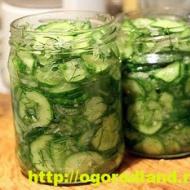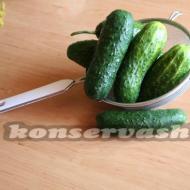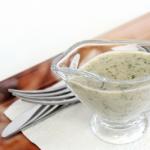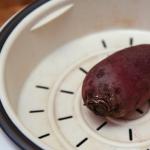
Why leaves are dried by a sunflower. Diseases and pests of sunflower - how to protect it from various factors
Domestic farmers rarely achieve the same high yields of sunflower as in European countries, the culprit is the failure to comply with agricultural practices, climatic conditions, as well as diseases and pests of sunflower. Moreover, the loss of grain as a result of the defeat of diseases in most cases is due to a violation of the technology of growing sunflower.
Diseases that can hit sunflower
Pathological microorganisms most actively develop in high humidity and warm weather, and insect pests spread when plant residues remain on the fields after harvest. Harm can be caused to any parts of the plant: baskets, seeds, stems, leaves and young shoots. To avoid yield losses, it is necessary to monitor whether signs of common diseases or traces of insect pests have appeared on sunflowers, and to deal with them promptly.

Loss of grain as a result of disease disease in most cases due to a violation of the technology of growing sunflower
White rot
Depending on the period of infestation of a sunflower, white rot can manifest itself in different ways and lead to different consequences. As a result of the disease attack on the baskets of the plant, the commercial quality of the seeds decreases — white rot can be identified by the rotting wet spots of a dark color that are rapidly spreading from the inside of the baskets.
With the defeat of white rot of the root part of the stem of sunflower at the stage of seed ripening, the crop shortage can reach 65%. If before the beginning of flowering a defeat of the root part of the stem has occurred, the loss of the entire crop is possible.
Video about sunflower protection from all pests
The infection penetrates into the sunflower from the soil, where the causative agents of white rot - sclerotia - winter. The viability of sclerotia persists for 8 years, and infection is possible throughout the entire growing season. To combat white rot, it is necessary to remove plant residues from the fields and immediately destroy the affected seeds so that they do not persist infection.
Gray rot
If brown areas covered with a grayish bloom appeared on the sunflower, it is possible to judge the damage of the plant with gray rot, which is able to manifest itself on all above-ground organs of sunflowers. When the stems are infected, yellowing areas appear, which soon turn brown, and the tissues above the affected areas begin to fade and wilt, the lower leaves dry out.
On infected baskets on the reverse side, gray-brown putrefactive spots sometimes form with a reddish border, subsequently the spots increase, becoming covered with an ashen colored bloom, and can completely cover the entire surface of the basket. Sunflower seeds in the infested baskets lose their germination, a crop shortage can reach 50%, and in case of severe infection the seeds are not formed at all.

On the infested baskets, gray-brown putrid spots sometimes appear on the back side, sometimes with a reddish border.
The causative agent of gray rot is best spread through plant debris, the main source of infection are the seeds affected by sclerotia. The countermeasures are the same as in the case of white rot.
Fomopsis
The first symptoms of fomopsis can be seen on the lower leaves in the form of dark or grayish spots with a light border around the edge of the leaf, or between the veins. On the stems of Phomopsis sunflower appears at the base of the stem is grayish-brown spots that quickly cover the entire stem. Fabrics of the stems soften, become silver and, losing strength, easily broken. Dark brown spots form on the back of the infected basket, which soften but do not rot. After some time, the affected areas on the basket become silver in color, and brown flowers and grayish seeds appear on the front side. Since the seeds are empty, the crop shortage reaches 50%.
The source of the spread of the disease are plant residues that must be promptly removed from the field.
Downy mildew

The infection is well preserved in the form of spores and mycelium in plant debris or in seeds.
When infected sunflower in the face of three to six leaves, the plants begin to lag behind in growth, they have a thin stem and small leaves. On the underside of the leaves you can see white spores of the fungus, the pathogen, and on the top - spots of greenish hue. Infected sunflowers remain dwarfed, form small baskets without seeds or die at all. The mass of seeds is reduced several times.
The infection is well preserved in the form of spores and mycelium in plant debris or in seeds. It develops quickly and spreads in rainy cool weather after sowing sunflower.
The most dangerous pests of sunflower
Cotton scoop
It is considered one of the most dangerous pests, because, feeding on the leaves and the generative organs of the plant, causes direct damage to the sunflower crop, and in addition weakens the plant, contributing to the infection of the sunflower with diseases. The first generation of the cotton scoop develops in June and is less harmful due to the small number, while the second generation, which develops in July-August, causes more damage to the sunflower. Flying butterflies in the field will not be able to notice, since the cotton shovel is a night insect, it begins to fly only in the evening.

The first generation of the cotton shovel develops in June and is less harmful.
Due to the fact that the first generation of cotton shovel develops on weeds, it is necessary to regularly destroy weeds and loosen the soil between the rows, especially during the period of pupation of the insect. Affected sunflowers are treated with insecticides, at least one month before harvest.
Sunflower fire
Flame or moth is dangerous for sunflower planting in that it lays eggs directly in sunflower baskets, and the emerging caterpillars eat parts of flowers, gnaw through the seed coat, completely eating them from the inside, and damage the baskets themselves. Within three weeks, the development of the larvae ends, after which they move to wintering in the upper layer of the soil, where they pupate. During the season, one generation appears, butterflies begin to fly in the middle of summer.
Previously, sunflower moth caused enormous damage to sunflower crops. Now, thanks to the cultivation of armor varieties and sunflower hybrids, we managed to cope with the problem. The fact is that an armored form has a layer of solid cells, which cannot be pierced by the caterpillars of the moth.
Video about sunflower
Meadow moth
Damage to sunflower is caused by the caterpillars of the meadow moth, which gnaw holes in the leaves, making them skeleton or completely eating up the entire leaf plate. The stems and the generative part of the plants are also eaten by caterpillars. And in the case of mass distribution of the meadow moth in sunflowers, the aboveground part can be completely eaten. The most numerous and harmful is the first generation of the meadow moth. Butterflies appear in spring, when the air temperature reaches +15 degrees. In late May begins the massive years. Caterpillars winter in cocoons in the soil, and pupate in spring.
In areas where the meadow moths winter in the ground, the ground should be deeply plowed under a chaff. In addition, it is necessary to constantly destroy weed vegetation and treat inter-row insecticides in the summer.
Due to the good resistance of many sunflower hybrids to the main phytopathogens, farms can grow them with minimal use of protective agents. But during the epiphytotic years, farms still have to resort to integrated protection of sunflowers against pests and diseases, taking into account the established phytosanitary conditions in the field.
To successfully combat pests and diseases of sunflowers, as well as to prevent their negative impact, we need knowledge of their biology, relationships with the outside world, as well as developmental characteristics.
In most cases, sunflowers are affected by such diseases as dry, white and gray rot, fomopsis, fomoz, downy mildew, broomrape, and alternariosis. All of them can cause quite serious damage to plants.
Dry rot
With the defeat of dry rot on the back of the basket appears rotting stain brown-brown. Also, the fungus passes to its front side, as a result of which a felt bloom of a dirty white shade appears between the seeds. At the end of the disease, the cells where the seeds are located begin to fall off, and the seeds themselves become bitter. Dry rot reduces yield by 20-40%.
White rot
Such factors as long rainy weather accompanied by low air temperature, excessively deep sowing of seeds, excessive feeding with nitrogen fertilizer, clogged and thickened fields contribute to the appearance of white rot (sclerotinia).
This disease manifests itself during the entire growing season, but most of all its symptoms are expressed when the baskets mature. These symptoms include:
- defeat of seedlings. When this occurs, the withering and rotting of the cotyledon leaves occurs;
- defeat of the stem at different heights of sunflower. In the affected areas can be seen stains rot. This leads to the fact that the stalk becomes brittle, and the leaves begin to dry and fall off;
- root collar damage. It consists in the appearance of brown spots on the root neck of the neck. Most occurs during the flowering of sunflower. It rapidly fades, and then dries.
The most dangerous is the basket form of white rot, which leads to the appearance on the back side of the basket of softened areas, which eventually turn brown.
The marsupial fungus, which is the causative agent of sclerotinia, does not die for 2-5 years. All this time he can tolerate adverse conditions. The disease is spread by insects, air movement and rainwater. Spores spaced across the field, fall into the sunflower and germinate on it, forming mycelium.
White rot is a disease that affects not only sunflowers, but also other weeds and cultivated plants. Plants affected by it, spread the infection to neighboring plants.
The fight against sclerotinia is to combine all the methods of advanced agricultural technology of sunflower.
Gray rot
By gray mold is meant a fungal disease, the symptoms of which are quite similar to the symptoms that appear during sclerotinia. It damages leaves, stems, buds, flowers and baskets. With the defeat of this disease at the initial stage of sunflower growth, the stalks begin to rot, due to which the seedlings die. To distinguish gray mold from white in the early stages of the disease can be on a darker shade of the formed spot. And after about a week, this stain will be covered with a thick blot of dusting gray mold. Also in the affected tissue, as a rule, on its surface, small sclerotia of a flat and round shape will appear.
Gray rot in areas with cool and rainy weather harms the sunflower no less than the basket-type sclerotinia.
The main factor contributing to the spread of this disease is high humidity. Its pathogen develops at low temperatures, very close to zero. Therefore, in the southern regions, where long winter thaws with positive temperatures often occur, the causative agent of gray rot spreads in the winter period, on the post-harvest residues of plants.
After hitting the seeds on the field, the disease can continue to adversely affect them if the seeds are not dried thoroughly.
It is necessary to fight gray mold the same way as with sclerotinia.
Fomopsis
Fomopsis is a quarantine disease that damages the stems, leaves, seeds and baskets of sunflowers, from the moment of formation of 2 true leaves and ending with the vegetative period.
With this disease, brown spots appear on the leaves of the sunflower, which spread from the main vein to the petiole. In the future, the leaves completely blacken and dry out. Due to the annular lesion of the stem, the whole leaf begins to wrinkle quickly.
As for the stems, Fomopsis mostly infects them slightly above the 4th pair of leaves. After a certain time, the spots increase in size, acquiring a gray or brown-gray tint. The disease contributes to the softening of the plant tissue of the stem, which leads to its destruction. With the defeat of young sunflowers, they fade in about 10 days. Their death is usually associated with malnutrition and water balance. Fomopsis spreads quickly at a temperature of + 20-25 degrees. At a temperature of + 10-15 degrees, the growth of spores slows down, and at +35 degrees mycelium does not develop at all.
If there is a Phomopsis, brown spots appear on the basket on it. The seeds themselves remain unfulfilled, rather easily depart from the basket, acquire a grayish tint. The weight of seeds, germination rate and oil content are also reduced.
The source of Phomopsis are plant residues. Since this infection is a new disease in the sunflower, the following agrotechnical measures should be carried out:
- inlaying seeds;
- sow sunflower hybrids that are highly resistant to fomopsis;
- cares for crops to be free from weeds;
- carefully chop and plow up the remains of sunflowers so that they re-spread the infection;
- after harvesting winter wheat, which goes through the sunflower affected by fomopsis, carry out semi-steamed tillage.
Fomoz
Symptoms of sunflower damage occur when the basket is formed. It can be dark brown spots at the root collar, as well as at the point of attachment of the leaf stem. Increasing in size, they hit a significant part of the stem and rise up. The affected stem becomes hollow, which is why it breaks quite easily. From the stem, the mushroom enters the basket, where it appears as a narrow strip of brown color or separate blurry spots of brown shade.
Downy mildew
Causes the most different forms of manifestation of the disease. In most cases, downy mildew leads to a lag in growth, closer leaves and reduced internodes. At the top of the leaf, you can see a chlorotic blooming spot, and from the bottom of the leaf - spore-bearing fungus, manifested by white bloom. The very first symptoms appear, as a rule, in the formation of 3-4 pairs of leaves in a sunflower.
If the disease occurs in a latent form, there will be no external symptoms of the lesion on the sunflower. The fungus is located in the roots and falls into the stem at a distance of about 13 cm from the root collar.
The development of this disease is promoted by such factors as the presence of infection in seed, cool and wet weather for a long time, too deep sowing of seeds, excessively thickened sowing. In order to improve the seed material, it should be thoroughly cleaned and treated with special chemicals.
Zarazikha
The most effective method of protection against damage by this disease is the use of hybrids that are resistant to broomrape, because at the moment there are no chemicals that would allow it to fight.
Alternaria
As a rule, the first symptoms of this disease can be seen at least 25 days after the end of flowering. Symptoms of Alternaria appear on the back side of the basket and the expanded axis of the inflorescence in the form of a brown, rapidly increasing spot, which after some time covers the part of the basket and the axis of the inflorescence.
Also, the disease often manifests itself on the back side of the basket in the form of individual brown spots, which soon grow and infect the leaves of the wrapper.
Verticillosis
Verticillis refers to the fungal diseases that lead to the withering of sunflowers. Most develops by the time the basket is formed, but sometimes its signs appear even earlier - during flowering. If verticillus is affected, the leaves, starting from the top, begin to wilck and dry. Despite the fact that the sunflower continues to grow, forms a basket that blooms and produces seeds, the yield is greatly reduced.
The fight against verticillosis is a series of preventive measures. The main ones are:
- sowing sunflower hybrids that are resistant to this disease;
- techniques of high farming;
- carrying out before harvesting the cleaning of plants affected by the disease.
Diseases and pests cause great harm to the sunflower. In practice, there are many cases when, for example, white and gray rot, downy mildew and other fungal diseases, especially with epi-phytoties, reduced the yield of sunflower 2-3 times, sharply worsened the quality of seeds and the oil contained in them.
To successfully combat diseases and pests, to prevent their harmful effects, knowledge of their biology, characteristics of development and nutrition, and relationships with the environment are necessary.
Sunflower can develop more than 40 types of pathogens of fungal, bacterial and viral origin. The most common and harmful are fungal diseases: white, gray, ashen, dry rot, downy mildew, fomoz, verticilliasis, alternariosis, etc.
The spread of certain diseases depends largely on environmental factors, and in different agro-climatic zones of their appearance is frequent or periodic.
White rot (sclerotinia). May affect sunflower during the growing season. Manifested in various forms, but they are all a result of local infection and are local. When infection occurs in the period from seed germination to the emergence of sunflower seedlings, the seedlings die. When infected in the period from three to five pairs of true leaves, the tissues at the base of the stem soften and it is easily cracked. This radical form of the disease manifests itself in the later phases of plant development, most often before the start of flowering, when they quickly wither and then dry out.
The main difference between the stem form and the root one is that the affected area is located at different stem heights and in this place the stem breaks easily. In plants affected by root and stem forms, a mycelium is formed along the edges of rotting spots in the form of a dense white patina, which is further compacted, covered with a shell, turning into sclerotia of various shapes and sizes. Sclerotia are located on the surface and inside the plant tissues.
The most harmful is the basket form of the disease, which is observed during the ripening of sunflower. In the infected baskets, a brown, weeping, rotting spot appears on the back side, subsequently covering a significant part of the inflorescence. Rotting goes to the front side of the basket. Achenes in diseased plants are enveloped in a mycelium, the shell becomes discolored, the kernels become puny and darken, acquiring a musty smell and a bitter taste. Inside the basket is filled with large sclerotia of various shapes. The raid of the mycelium, which tightly wraps the seeds, also turns into sclerotia, forming a net that copies the gaps between the seeds.
Infectious onset of sclerotinia persists in the soil, as impurities in the seed material and directly in the seeds. The source of infection in the soil is the remains of diseased plants with mycelium and sclerotia and individual sclerotia, fallen from the affected plants.
Gray rot. The disease is most pronounced in areas of sufficient moisture, where it can kill swollen seeds, seedlings and sprouts of sunflower, especially during early sowing. At high humidity, plants most often die in the seed-seed phase and 1-2 pairs of true leaves.
In diseased young plants, a dark, decaying spot appears on the lower part of the stem, covering the entire stem. After 5-7 days, a gray mycelium forms on the affected tissue, spore-bearing in the form of a thick dusting raid, then the plant fades and dies. As the sunflower grows and develops, the disease can be found in any part of the stem, but more often at the bottom. On the surface of the dead tissue and occasionally inside it, small (1-3 mm) black sclerotia are formed. The disease affects not only the stem, but also the leaf blades, their petioles, ripening and mature baskets.
With the defeat of the basket on its back there is a dark spot, which grows and is covered with abundant sporulation of gray. Then the mycelium goes to the front side. Fabric baskets rot and collapse. Infection may begin on the front of the basket. When the disease immediately after flowering basket parts, starting from the edges, falls off the plant. If the basket is affected during the period when it becomes yellow, and later, the sporulation of the fungus is formed only on the front side. Seed cells are filled with sclerotia, located at the bottom of the seed nests or on the side of the seed.
Sources of infection - post-harvest residues of diseased plants and seeds. At increased seed moisture, the fungus can continue its development, causing damage to the seeds.
Ash rot. A brown stain appears at the base of the stem. The tissues of the stem in the places of defeat are softened. The spot, acquiring a light ash color, covers the entire stem and moves up the plant. Later, the stem parenchyma decomposes, which becomes hollow and breaks easily. Under the epidermis and in the stem core small, various forms of fungal microsclerotia are formed. The wilting of plants occurs due to the defeat of the vascular bundles, as well as the destruction of the parenchyma and other tissues.
As a rule, the fungus penetrates the plant through the integumentary tissues of root hairs, root and root collar. Under favorable conditions for the development of the pathogen, infection of plants occurs during seed germination, causing severe damage to the integumentary tissues of the root hair and root. In the early phases of plant growth and development, the fungus spreads directly through the tissues of the sunflower root, and in the budding phase it penetrates into the root conducting system and, spreading through it, passes into the stem. Most harmfulness is manifested in the decrease in plant productivity and deterioration in the quality of the crop. Under the influence of the causative agent of the disease, the metabolism in the plant is disturbed, and the intoxication of the plant organism occurs.
The main source of accumulation and preservation of the infectious agent in the soil is the remains of diseased plants. The source of the primary infection is the fungus microsclerotia, which, upon the occurrence of favorable conditions, germinate in the mycelium.
Dry rot baskets (rhizopus). Only sunflower baskets are affected, during the ripening period of which a brown-brown decaying spot appears on the back side, quickly covering the entire basket. The affected areas, and then the entire basket, become dry, hard and crumble when shaken. The mycelium extends to the front of the basket, between the seeds. Mycelium penetrates the seeds, which become puny and acquire a bitter taste. By the end of the disease, the cells with the seeds fall off. Unlike sclerotinia, when the disease is dry rot, the fabric does not soften, but dries up. Sclerotia does not form a fungus; Infectious onset persists in post-harvest residues, especially in loose parts of baskets, as well as in diseased seeds.
Downy mildew. There are two contrasting forms of damage: a typical manifestation and latent course of the disease. With a typical manifestation of the disease, the plants lag far behind in growth, the internodes are reduced, the leaves are drawn together. On the upper side of the leaf is clearly expressed chlorotic, spreading spot, on the lower side - sporification of the fungus in the form of white dense bloom. The first signs of the disease are most clearly seen when 3–4 pairs of true leaves form in sunflower. This form arises from a primary or secondary infection with the diffuse spread of the fungus in a plant.
With a hidden course of the disease on the plant there are no pronounced external signs of damage. The fungus is localized in the roots and penetrates the stem at a distance of 10-15 cm from the root collar. This form is the result of infecting a plant in a field or penetration of a fungus from seeds.
In the field, the form of the disease depends largely on the timing of infection. When precipitation falls during the period of germination of sunflower seeds and the appearance of cotyledonary leaves, the infection goes through the roots and causes a typical manifestation of the disease. The precipitation during the period from germination to 1-2 pairs of true leaves also contributes to infection, but in this case, as a rule, the latent course of the disease appears. As a result of secondary, local infection, angular chlorotic spots of various sizes appear on the leaves. On the underside of the leaf, the sporulation of the fungus, a white patina, is formed.
In addition to the general disease of plants and local leaf damage, two forms of basket damage are observed. These late forms are caused by a secondary infection. In the first form, diseased plants are no different from healthy ones in the height and size of the baskets, but they have external signs of the disease: on the front of the basket there is a section with dried flowers and small seeds, on the back side the corresponding sector has compacted tissue with more intense green color. The second form of lesion baskets has a hidden course of the disease and is associated with the fact that the mother plant asymptomatically transmits the pathogen to his.
In order for the sunflower to be less affected by various diseases, it is necessary to qualitatively prepare the soil and seeds for sowing, and constantly monitoring the growth of sunflower because the measures taken in time will save the crop.














